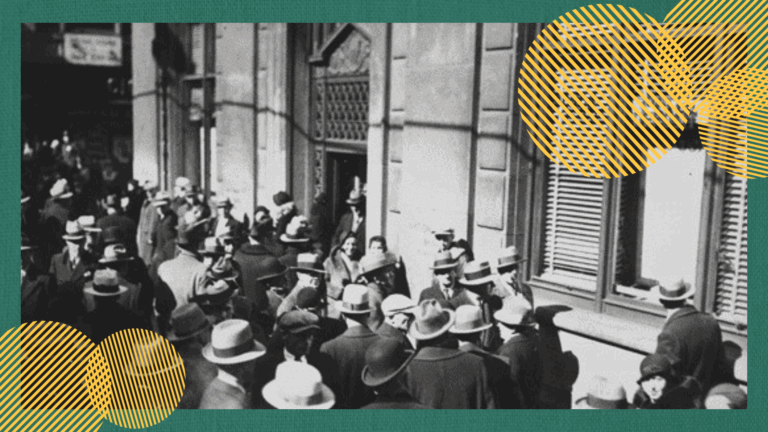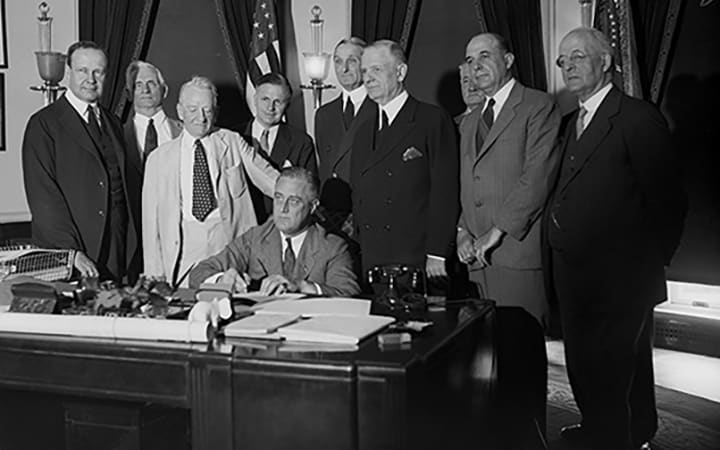Ferdinand Pecora and the 1929 Stock Market Crash

Lesson Plan
Our two-day inquiry lesson plan will teach students about the findings of Ferdinand Pecora’s investigation into the stock market crash of ‘29. Students will examine the dangers of unregulated financial markets and the harm that is caused to ordinary citizens when financial institutions misbehave. Students leave being able to answer the question “Should the government regulate financial institutions?”
This free download includes:
- Lesson plan
- Primary sources
- Student worksheets
- Answer key

Snapshot
Our snapshot of Ferdinand Pecora and the 1929 Stock Market Crash is a classroom-friendly of our Portrait in Oversight on the same topic. Each of our snapshots is a four-page summary of the historical event. Included in the download, you’ll find:
- Comprehension questions
- Discussion questions
- Answer key
- Audio recording of the snapshot
- Spanish translation of all materials
Video
We’ve partnered with Detroit PBS to bring you our Portraits in Oversight video series. Our video on Ferdinand Pecora and the 1929 Stock Market Crash is designed for use in the classroom and features expert commentary.
The breakdown of 1929 was the result of willful mismanagement and violation of every principle of sound finance. It was the outcome of vulgar greed at the cost of the community. It has been a national disgrace and a source of untold national and individual loss. In paying the bill for it, the American people should think seriously about how they can best avoid running up another.
H. P. Willis, Who Caused the Panic of 1929?
Members of Congress from both parties spent the years following the Stock Market Crash of 1929 and the ensuing Great Depression attempting to understand the causes of the financial devastation, with limited success. The Senate Committee on Banking and Currency authorized an investigation in 1932 that only picked up steam in 1933 after a staff member named Ferdinand Pecora took over the investigation in January.
Over the course of the next two years, the committee investigation received support from both Presidents Herbert Hoover and Franklin Roosevelt, and bipartisan support from the Senate. On the committee itself, regardless of which party was in the majority and the pressures on the committee’s limited budget, committee members stood behind Mr. Pecora and worked to support his investigative efforts. Eventually, the inquiry became known as the Pecora Investigation.
Content Standards
MI USHG – 7.1.2 Causes and Consequences of the Great Depression. Explain and evaluate the multiple causes and consequences of the Great Depression by analyzing:
- the political, economic, environmental, and social causes of the Great Depression, including fiscal policy, overproduction, underconsumption, speculation, the 1929 crash, and the Dust Bowl.
- the economic and social toll of the Great Depression, including unemployment and environmental conditions that affected farmers, industrial workers, and families.
MI Civics – 3.3.1 Describe and analyze how groups and individuals influence public policy.
MI Civics – 3.3.5 Identify and discuss roles of non-governmental organizations in American civic society.
Once you fill out this form, you will be redirected to our download page. Make sure you save the download page so that you continue to have access to our materials!
If you have already filled out the download form, click here.